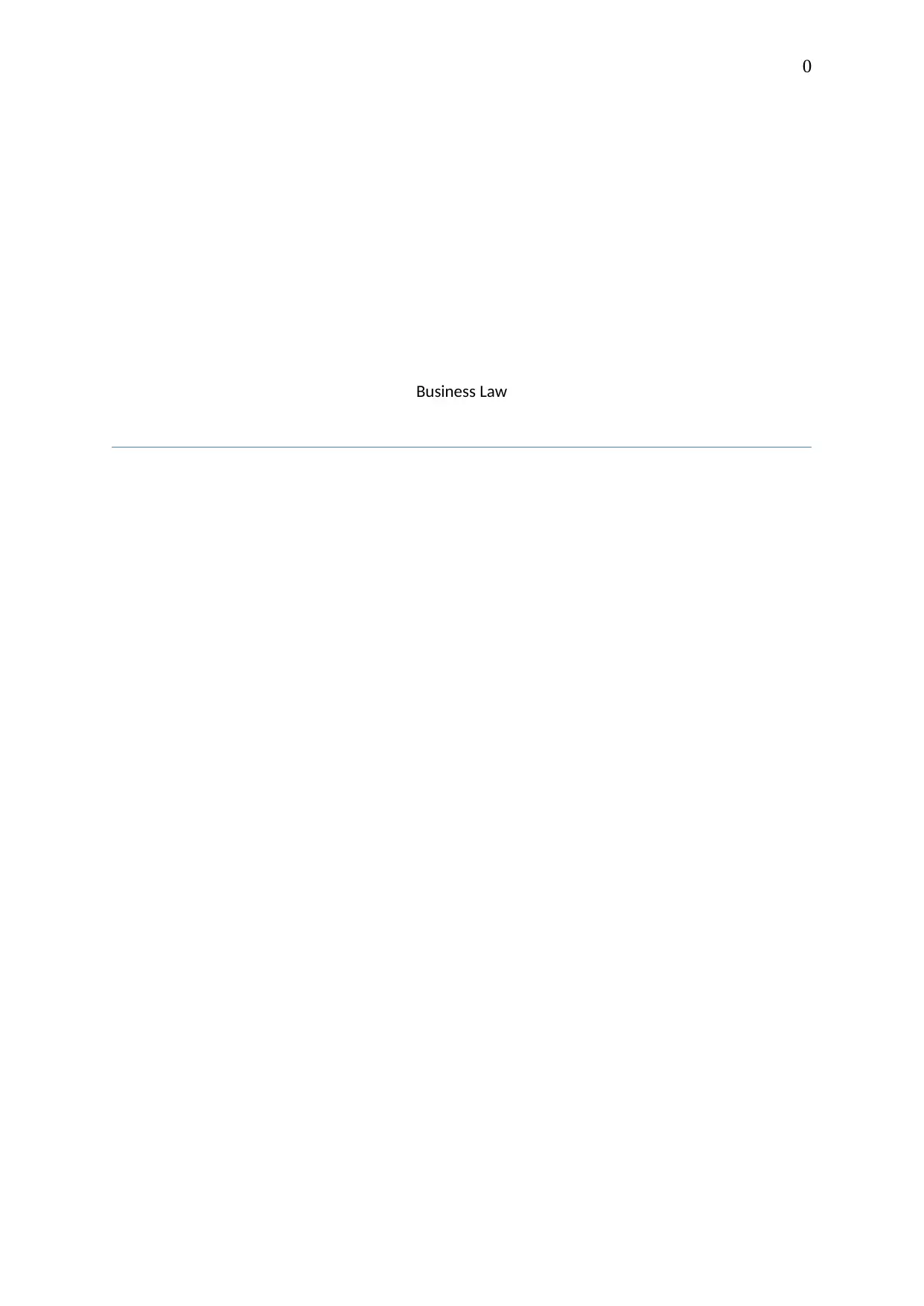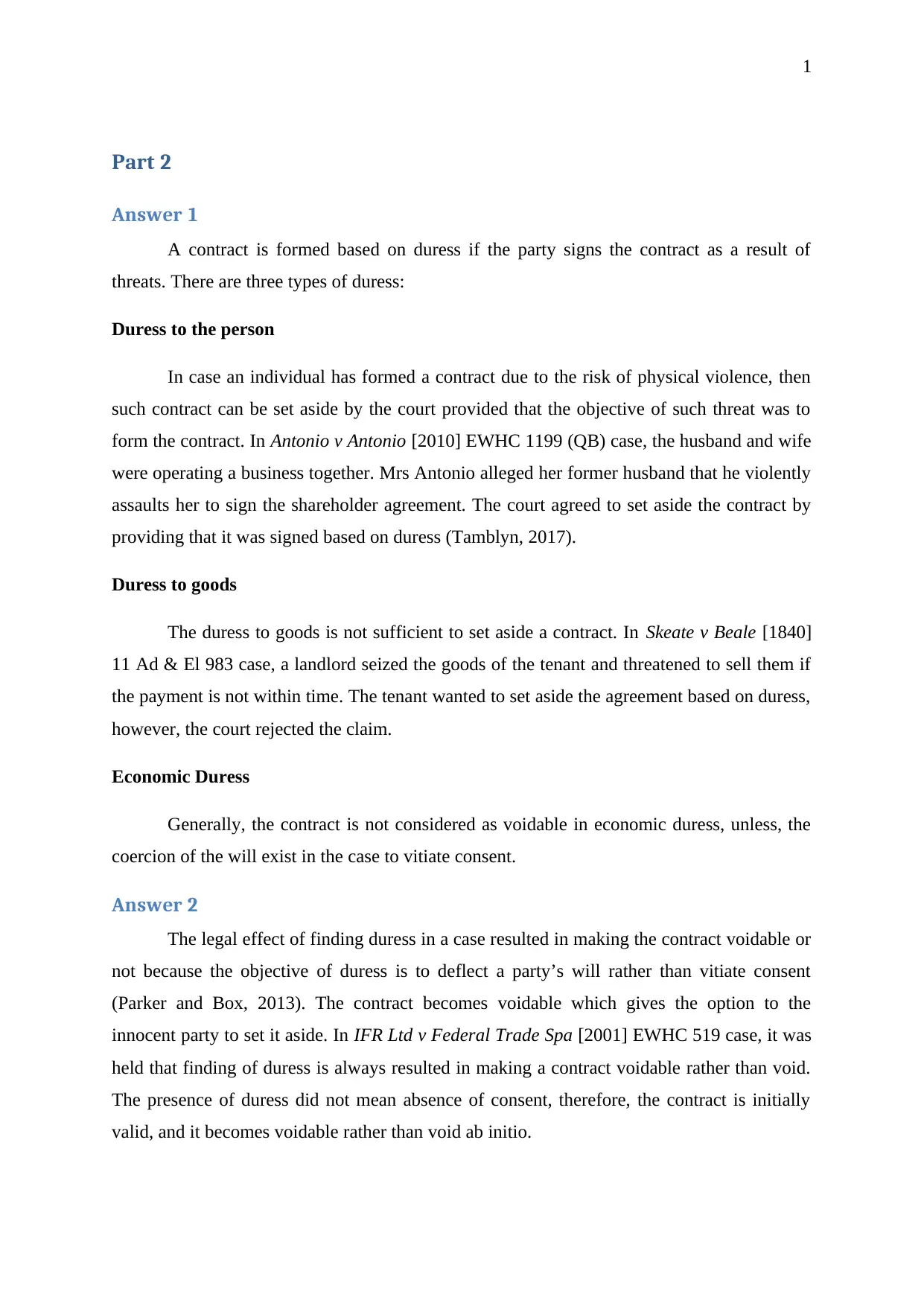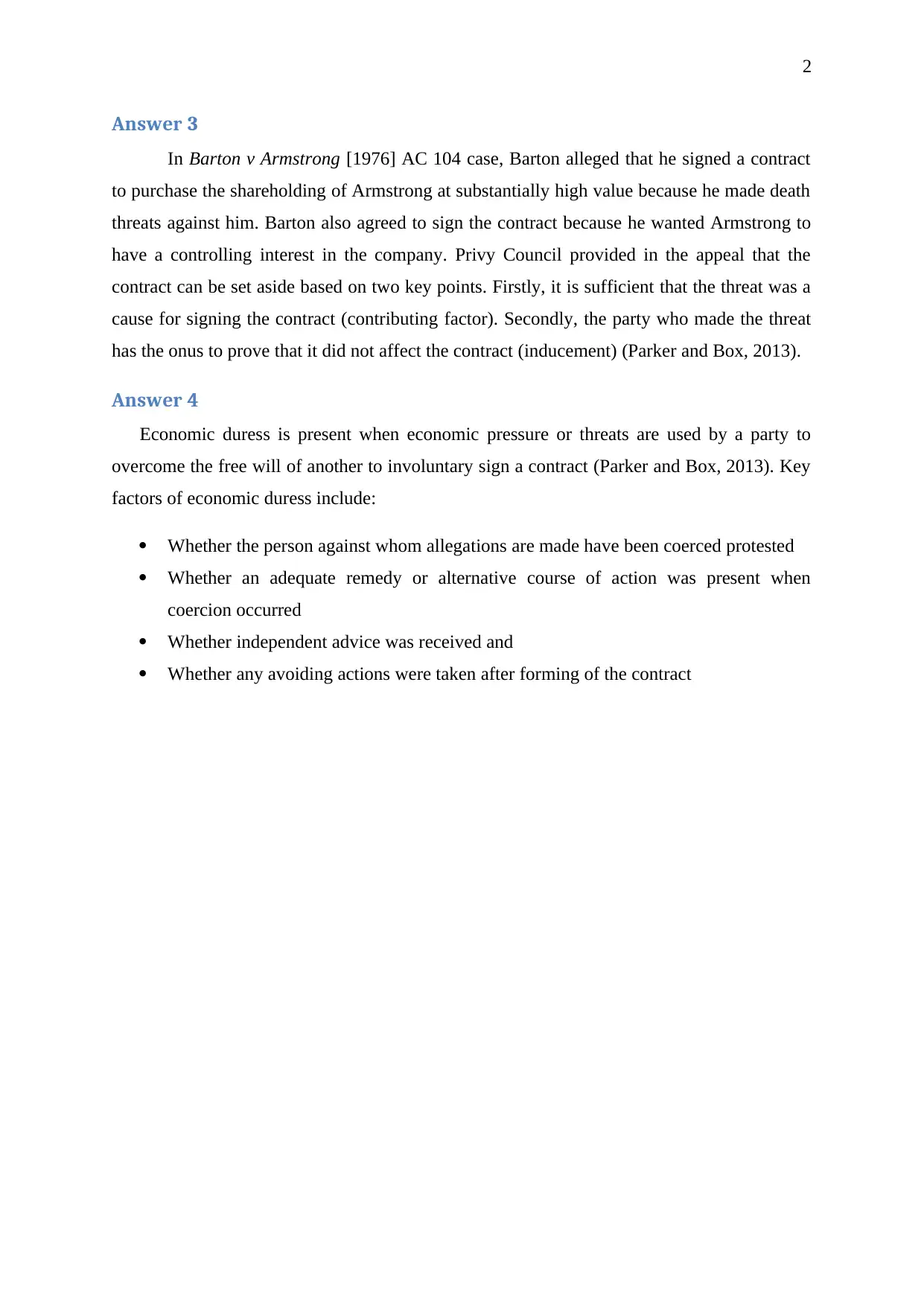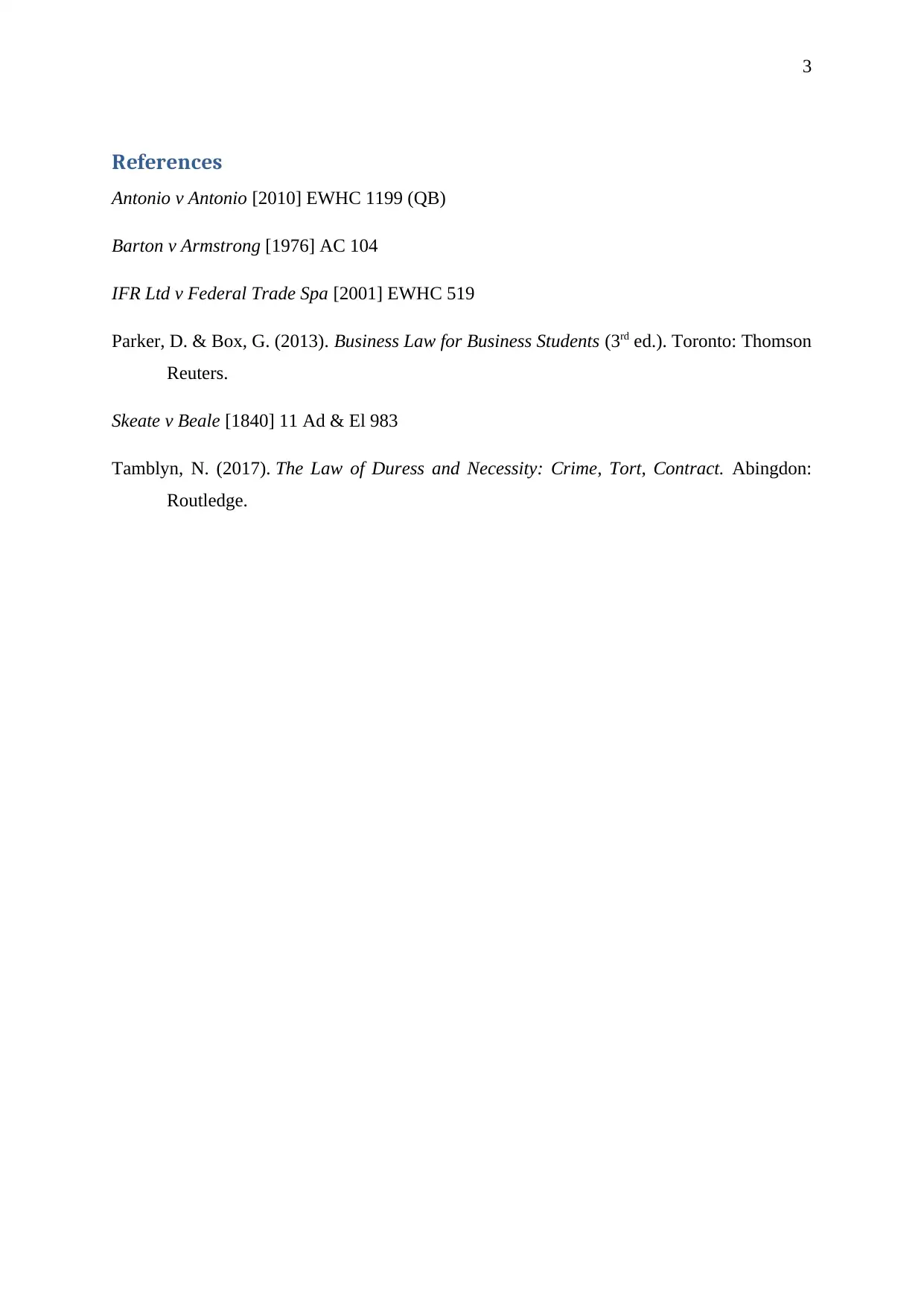Business Law: Detailed Analysis of Duress in Contract Formation
VerifiedAdded on 2023/06/05
|4
|677
|463
Case Study
AI Summary
This case study examines the concept of duress in business law, focusing on its impact on contract validity. It identifies three types of duress: duress to the person, duress to goods, and economic duress, illustrating each with relevant case examples like Antonio v Antonio and Skeate v Beale. The analysis highlights that contracts formed under duress are typically voidable, giving the innocent party the option to set them aside, as seen in IFR Ltd v Federal Trade Spa. The study also discusses the key factors of economic duress, including coercion, alternative remedies, independent advice, and avoiding actions, referencing the Barton v Armstrong case to emphasize the importance of threat as a contributing factor in contract formation. Ultimately, the study provides a comprehensive overview of how duress affects contract law and the legal remedies available.
1 out of 4











![[object Object]](/_next/static/media/star-bottom.7253800d.svg)